 How To Clean And Inspect Appliances To Extend Their Lifespan
How To Clean And Inspect Appliances To Extend Their Lifespan
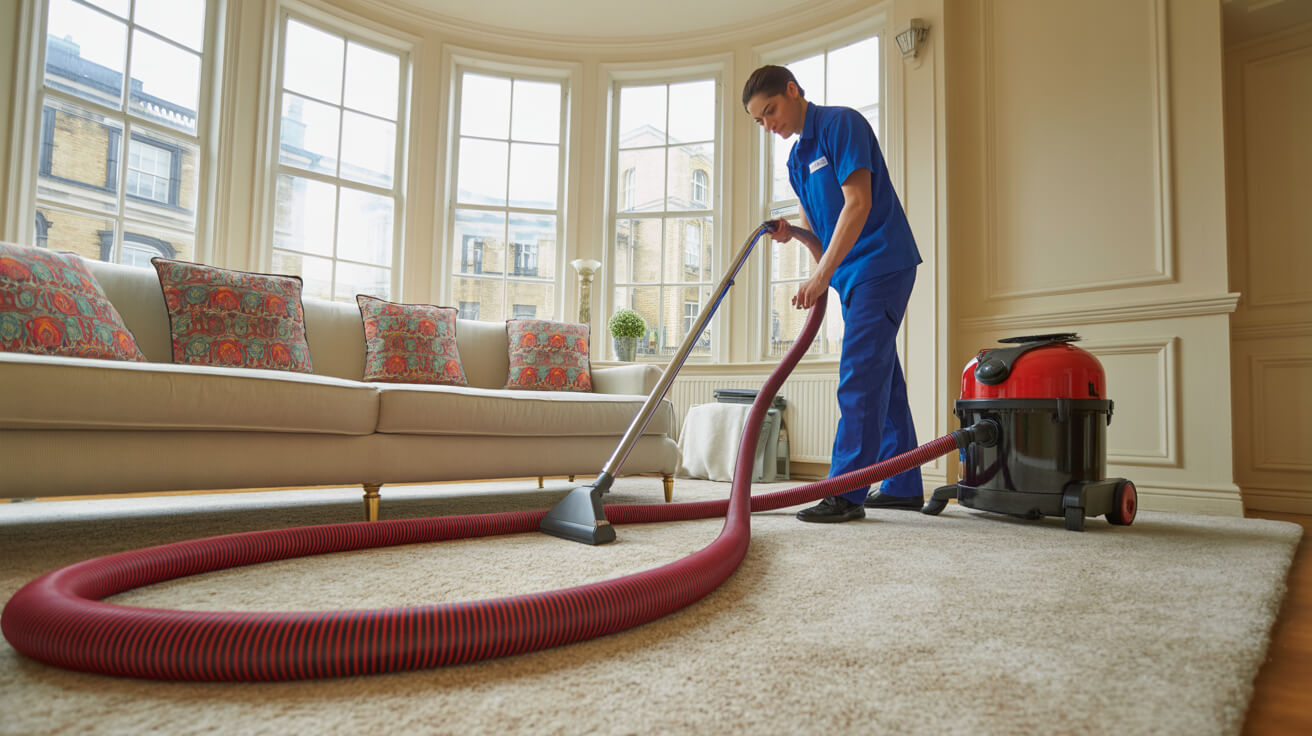
Why Does Routine Appliance Care Actually Save You Money and Stress?
Neglected appliances bleed cash. Most people blame “bad luck” when the washing machine coughs its last or a fridge seizes up and melts an entire week’s groceries. In reality, the true culprit is basic neglect—small missteps, skipped cleanings, and overlooked warning signs that quietly burn a hole in your pocket. Real property owners and managers don’t play dice with their assets. They bank on habits that choke off chaotic surprises.
Most expensive breakdowns aren’t bad luck—they’re bad habits, paid for later.
Run a tight ship and these costs drop off your radar. Dusty fridge coils force the compressor to groan and overwork, hiking energy bills by 10% or more a year (Source in outline). Missed lint traps in dryers are a top cause of home fires and hardly anyone realises that a plugged-up philtre can single-handedly spike your insurance premiums or even void a claim.
Routine cleaning and inspections aren’t just a tidy-up—they’re a systematic shield against the headaches that leave you cash-strapped and chasing your tail. Energy use shrinks, equipment lives longer, and callouts become rare. For multi-property owners, the benefits multiply: tenants have fewer frustrations, your compliance file stays bulletproof, and last-minute emergencies fade out of your calendar.
This isn’t about perfectionism or busywork. It’s about knowing the calm that comes when appliance headaches aren’t eating your week. Nobody boasts about the leak that never happened, but your balance sheet says thank you when small habits become huge savings.
How Can You Easily Structure a Cleaning & Inspection Routine That Works?
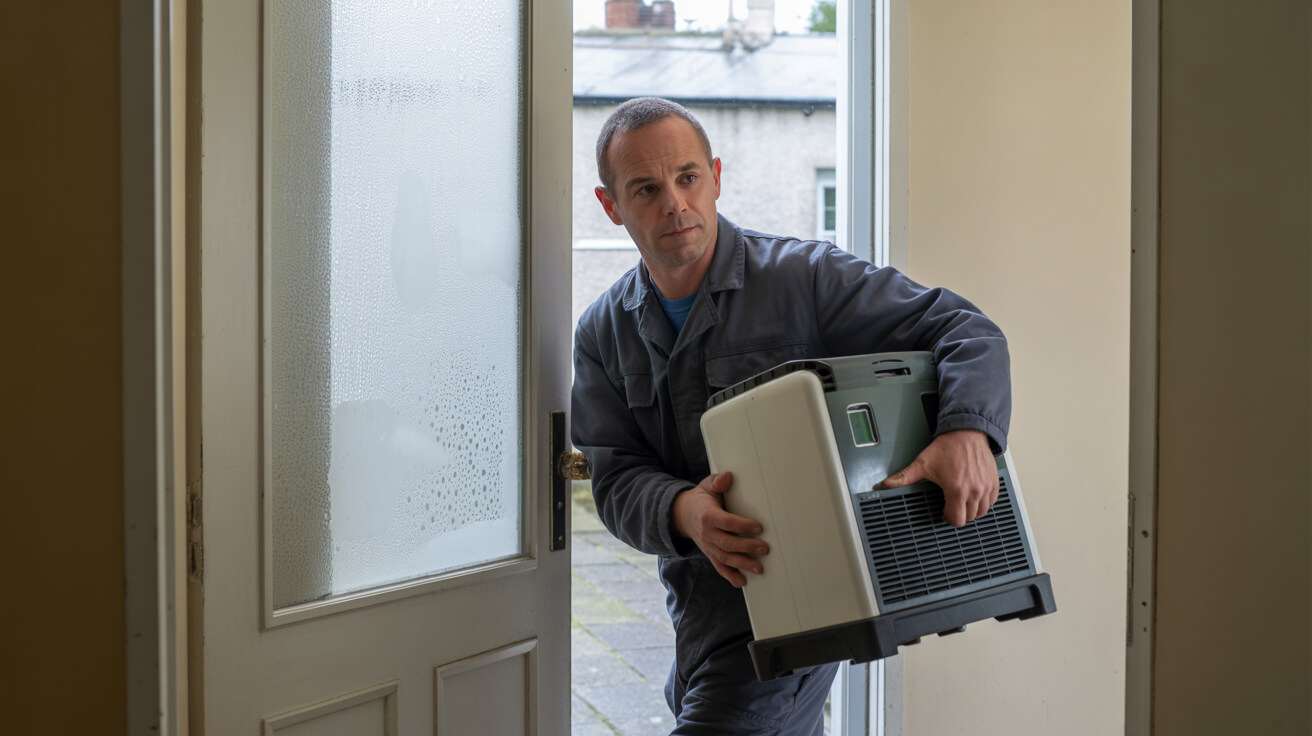
Overcomplicating maintenance is where most property owners lose momentum. The best system hooks into existing rhythms—bin day, payday, season changes, or tenancy turnarounds—not endless admin. If all you do is build routines around life’s automatic reminders, you’ll cover 80% of risk with a fraction of the effort.
The Secret: Smart Pairing and Simple Logging
The fastest way to consistency is aligning checks with something you already do. That turns “maintenance” from a mental burden to a mindless step. Consider a fridge checklist on bin-out day, or text yourself a photo of the boiler dials in spring and autumn with your seasonal bedding changeover. Most smartphones now support quick-upload logs that store photos, dates, and notes right where you need them.
- Fridge or Freezer: Vacuum condenser coils twice a year. A £2 cleaning brush keeps you from a £400 replacement at a date you don’t choose.
- Dishwasher: Clear out food and gunk philtres every 4 weeks. Watch odours drop and water run clear.
- Tumble Dryer: Clean the lint trap after every use. Miss this step and you’re not just risking performance—you’re flirting with a fire service visit.
- Washing Machine: Run a hot cycle monthly with nothing in the drum but cleaner; check seals for black or slimy buildup.
When upkeep fits around things you already do, nothing crucial gets skipped.
For property managers juggling multiple addresses, digital task lists and photographic logs are gold. They streamline compliance, provide proof in disputes, and de-risk tenant claims—especially in situations where memory isn’t your friend. A simple folder with time-stamped images outperforms any tracking app.
Smart routines aren’t a luxury for the over-organised; they’re a system that pays forward by slashing chaos and keeping asset value on track.
Which Parts of Appliances Cause the Most Early Failures?
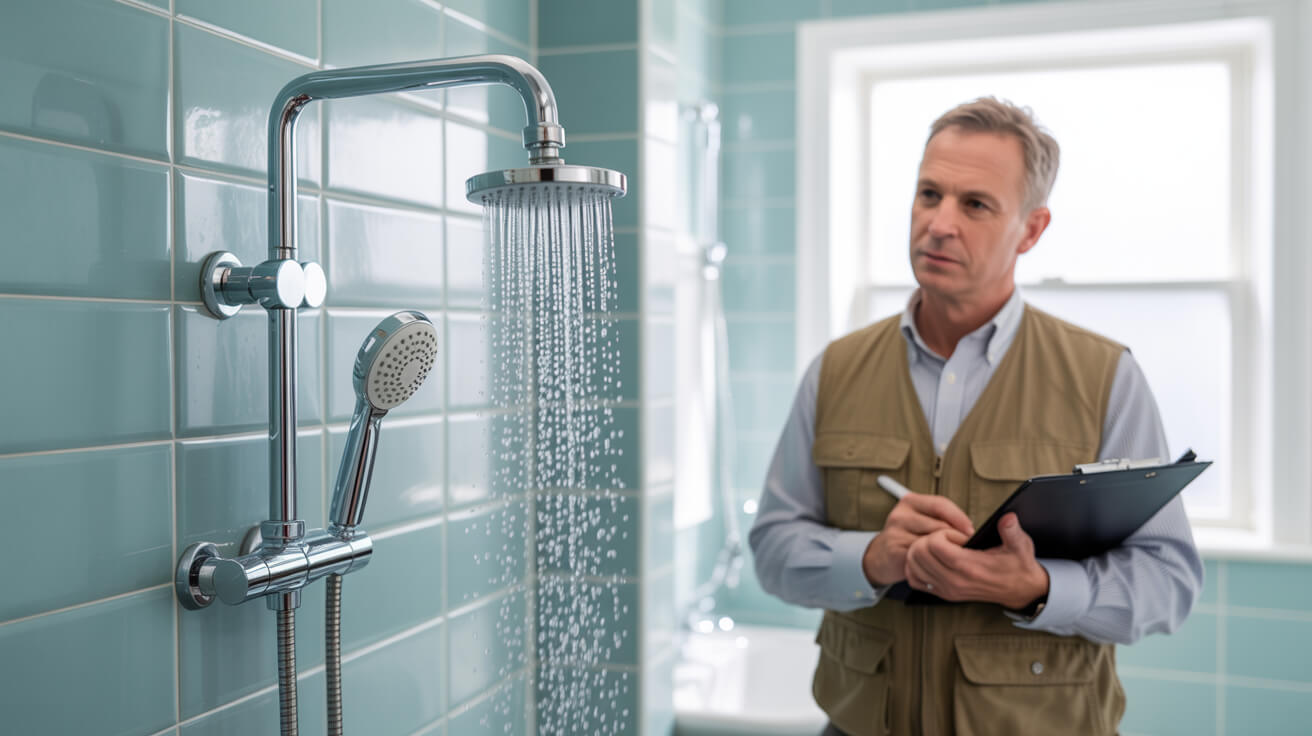
If you ask a technician what kills most machines, it’s not the scary stuff you imagine—it’s the basics that get skipped. It’s the ignored seals, the gritty philtres, the dust-caked fans and those “it can wait” tasks that spiral into a thousand-pound headache with zero warning.
Watch the Weak Points
Focus your checks and cleaning on these known troublemakers:
- Fridge/Freezer Coils: Clogged coils choke efficiency, making compressors sweat until they die young.
- Dishwasher and Washing Machine Philtres: A single stuck philtre strains pumps, causes backups, and taints everything that’s meant to be clean.
- Dryer Lint Traps: Fluff and dust aren’t just minor threats—they’re the number one ignition source for household dryer fires.
- Door Seals, Hoses, and Gaskets: A misfit or a minor crack lets leaks fester and roll into invisible mould, rot, or warped flooring.
- Plugs and Sockets: A plug that’s yellowed, bent out, or gets warm at the wall is the lava lamp of mechanical failure—glowy now, eruptive later.
Protecting these fail spots is your cheapest insurance. Small fixes here save the largest costs and headaches later.
Neglecting these specific areas is a false economy. Insurance claims for water leaks and electrical incidents are often denied if “owner maintenance” can’t be shown—especially if philtres are blocked or seals look ancient (Source in outline). Savvy property managers keep a “trouble zone” routine on file and back it up with photos for CYA (“cover your asset”) confidence.
You won’t need special gear: a soft brush, a decent torch, and a short-handled screwdriver do most work. It’s focus, not fancy tools, that extends appliance life and protects your property from hidden risk.
What Warning Signs Suggest an Appliance Is Headed for Trouble?
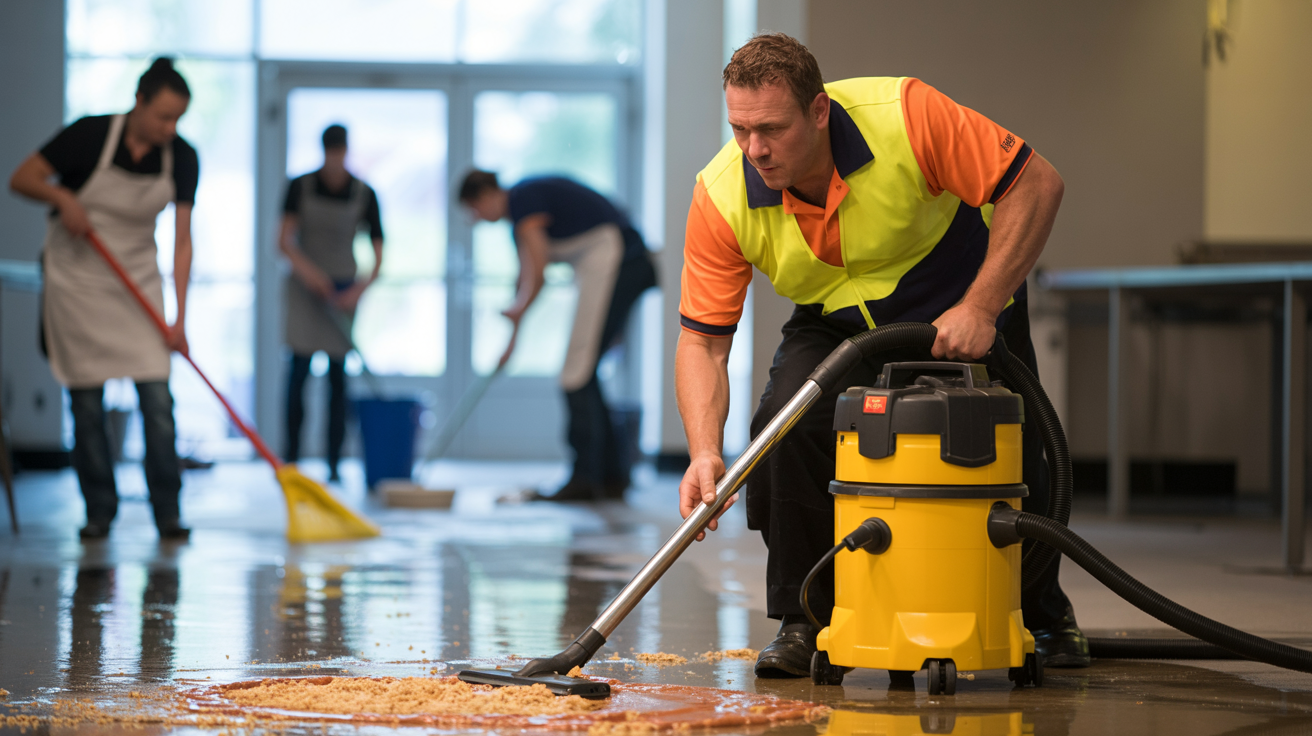
Your appliances absolutely communicate. The problem is most people don’t listen until it’s too late. Every “weird” noise, odd smell, or new stain is an invitation to act before a minor drama blooms into an expensive debacle.
Key Red Flags That Can’t Be Ignored
- Burning or Scorching Smells: Unplug immediately—if you notice burning, charring, or black marks, the safest move is waiting for a professional before further use (see [wil-lec.co.uk](https://www.wil-lec.co.uk/news/the-5-warning-signs-of-a-faulty-electrical-system/?utm_source=openai)).
- Unusual Buzzes or Grinding: If it’s louder, harsher, or sounds “off,” don’t just ignore the noise. Check for blockages, but escalate quickly if noise persists—especially with fridges or washers.
- Damp or Water Patches: Water where it doesn’t belong means more than a mop can fix. Leaks under a machine are fast-tracked to wood rot, electrical risk, or tenant claims.
- Repeated Tripping or Flickering Electrics: Frequent resets at the consumer unit or sockets heating up are clear indicators something internal is going wrong—get it checked.
You wouldn’t ignore a smoke alarm. Treat these clues the same way—quick action now avoids larger drama.
The best way to spot these is to create a habit: ask tenants for monthly photos of machine areas, especially if you manage from afar. Video walkarounds save hours and disputes later. Spotting a brown spot early or a crack at the hose spraying just a bit keeps you out of emergency mode and holds value in a legal pinch.
Miss these signs, and you’re not saving hassle—you’re simply borrowing trouble on an expensive payment plan.
What’s the Right Step-by-Step Routine for Cleaning and Inspecting Appliances?

Every win starts with safety first. Before you touch anything, pull the plug and flip the circuit. Wet hands and power tools do not mix—wear gloves for damp or metal work.
Walkthrough for Smart, Safe Cleaning
- Disconnect Power: Remove the plug or cut the breaker—skip this, and you risk more than a shock.
- Take Out Removable Parts: Philtres, racks, and shelves should come out and get a soak in warm, soapy water.
- Clean Surfaces and Hidden Corners: Soft cloths, brushes, and a torch work for most dirt—never use abrasives or bleach on finishes or rubber seals.
- Check and Rinse Philtres: Spotted crud, fluff, or residue? Rinse until water runs clear—replace if torn or crumbling.
- Inspect Seals, Hoses, and Plugs: Look for cracks, leaks, or discolouration. Any damage here means risk of leaks or electric shock—replace if needed.
- Dry Properly and Reassemble: Moisture is the common enemy. Wipe down and dry components fully before powering on.
Investing five extra minutes in care pays back in avoided breakdowns and longer appliance life.
Skip sharp objects—gaskets and seals can be nicked and then fail. Melt marks, rust, or exposed wires are stop signs, not “carry on” signals. Any hint of gas or hidden wire? Phone it in to a qualified pro—not doing so can void warranties, raise liability, or cause real danger (wil-lec.co.uk).
Truth is, if you make this process a habit, you’ll notice issues long before a casual check or “set and forget” mental lapse. Longevity isn’t magic—it’s maintenance with intent.
How Do You Know When to Call in a Professional Instead of Sorting It Yourself?
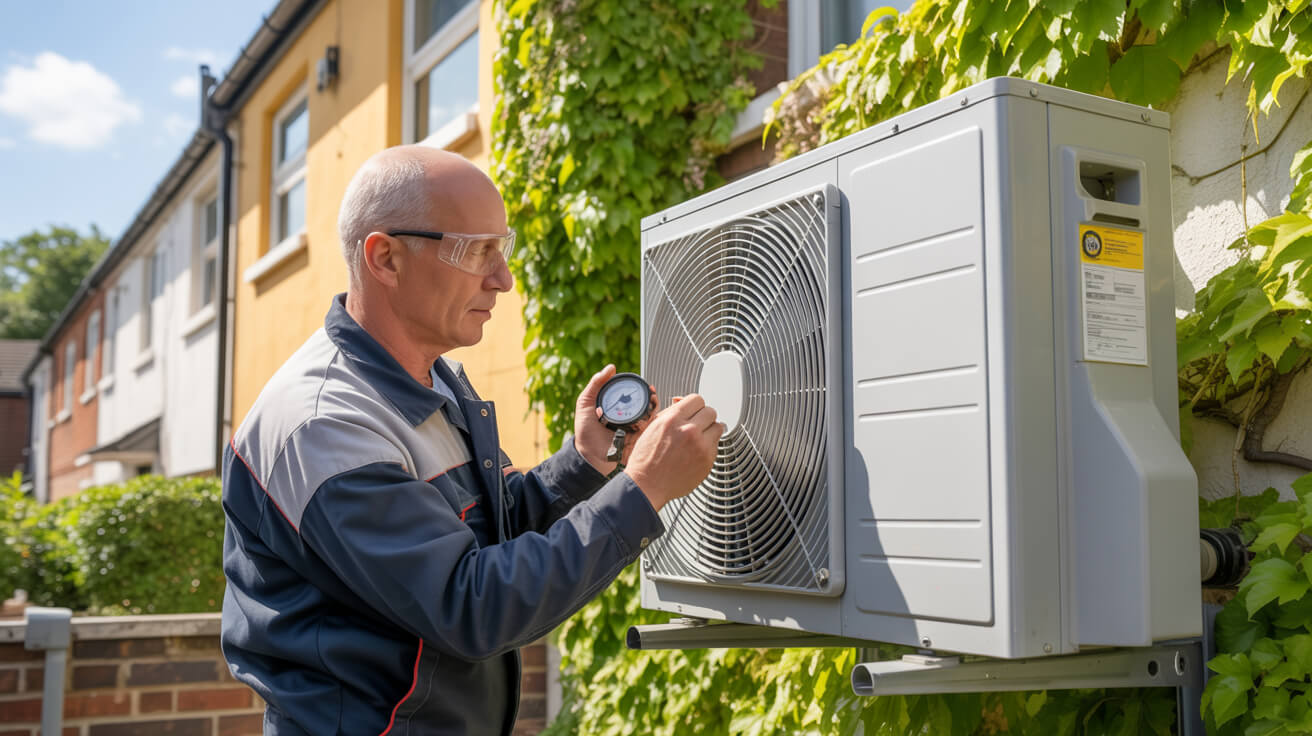
Most appliance issues are DIY-friendly if they’re about surface grime, ordinary cleaning, or swapping out worn philtres. The line shifts when real risk enters the field. That’s the moment wise managers flip from “I can fix this” to “I won’t risk it.”
When It’s Time to Pick Up the Phone
- Any burning smell, heat, or melted plastic.:
- Persistent tripping at the circuit—especially with large appliances.:
- Visible water around electric points or obvious signs of live wires.:
- Tasks that break warranty seals, open up gas lines, or involve unfamiliar wiring.:
Trying to force a fix when you’re in over your head, especially with electrical or gas lines, introduces a spectrum of risks: electrocution, fire, insurance problems, even prosecution. For landlords and block managers in the UK, it’s non-negotiable—EICR and gas certificates are legal musts, and insurers increasingly demand photographic evidence and professional documentation for all key checks.
Knowing when to stop is as important as knowing how to start. Safe choices now shield you from far bigger losses.
For clients, tenants, and even managing agents, the best move sometimes is to do a video walkthrough and hand it off to a technician. Documentation becomes your first defence against claims that could run into thousands, not just a “nice-to-have” for your own records (brightforceelectrical.com.au).
What Extra Benefits Does Routine Appliance Care Offer for Property Value and Compliance?
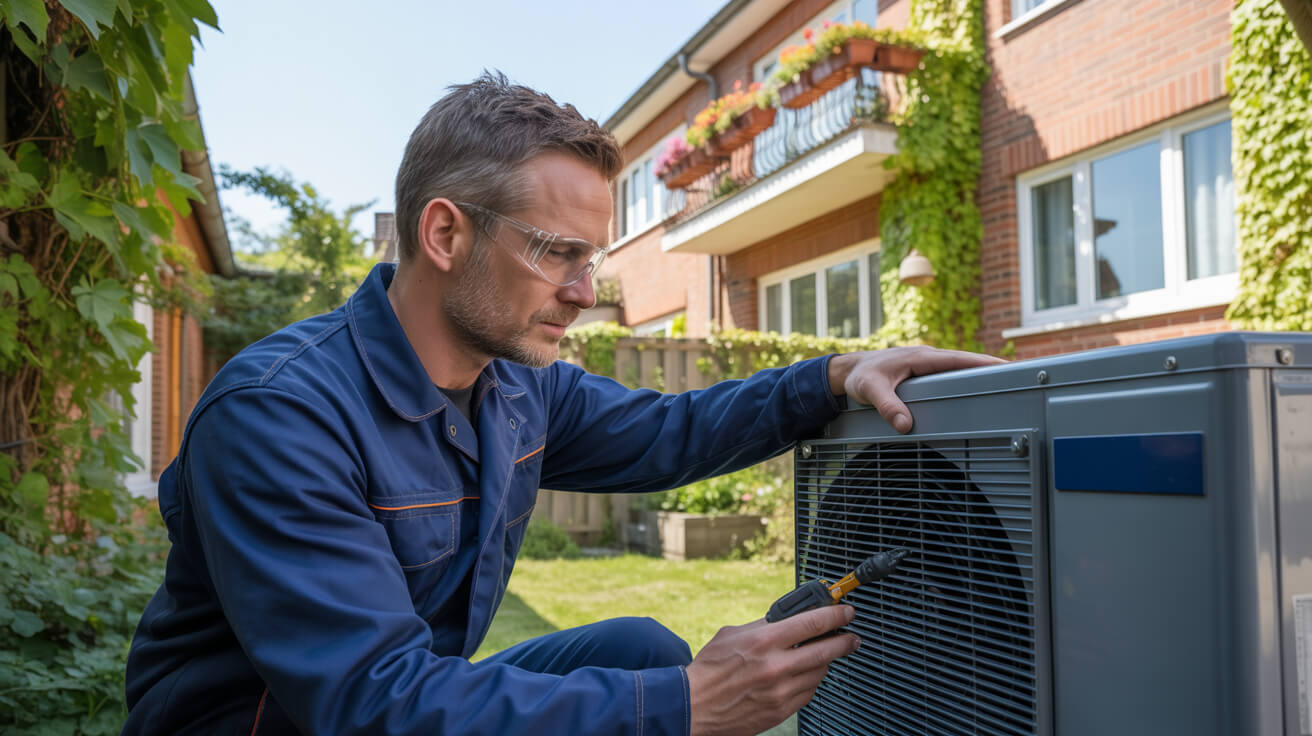
Think routine care is just about not breaking stuff? It’s actually about stacking the odds in your favour on the big things that matter most: asset value, compliance, reputation, and real peace of mind.
Bonus Outcomes You Actually Feel
- Lowered Utility Bills: Clean machines use less power and water—those savings add up, especially across a portfolio.
- Extended Appliance Lifespan: A £10 annual cleaning routine pushes that appliance’s replacement three or five years down the line.
- Dispute-Proof Compliance: Digital logs and maintenance files show insurers or legal reps your seriousness—crucial when arguing liability or fighting claims.
- Happy Tenants and Better Reviews: Reliable appliances mean fewer headaches, lower call-out rates, and more cooperation from tenants or guests.
- Boosted Green Credentials: Keeping machines running at peak means fewer dumped into landfills and greater eco-responsibility—a rising value in modern property markets.
The property professionals who win aren’t lucky—they’re just more meticulous, proactive, and future-facing.
A healthy maintenance habit elevates your reputation. Inspectors notice. So do tenants and insurance agents. Regular logs, especially with photos, put you in the “trusted” category fast. And in a world where compliance is king, routine care proves you play by the rules (townappliance.com).
How Does All Services 4U Take the Risk and Guesswork Out of Appliance Care for You?
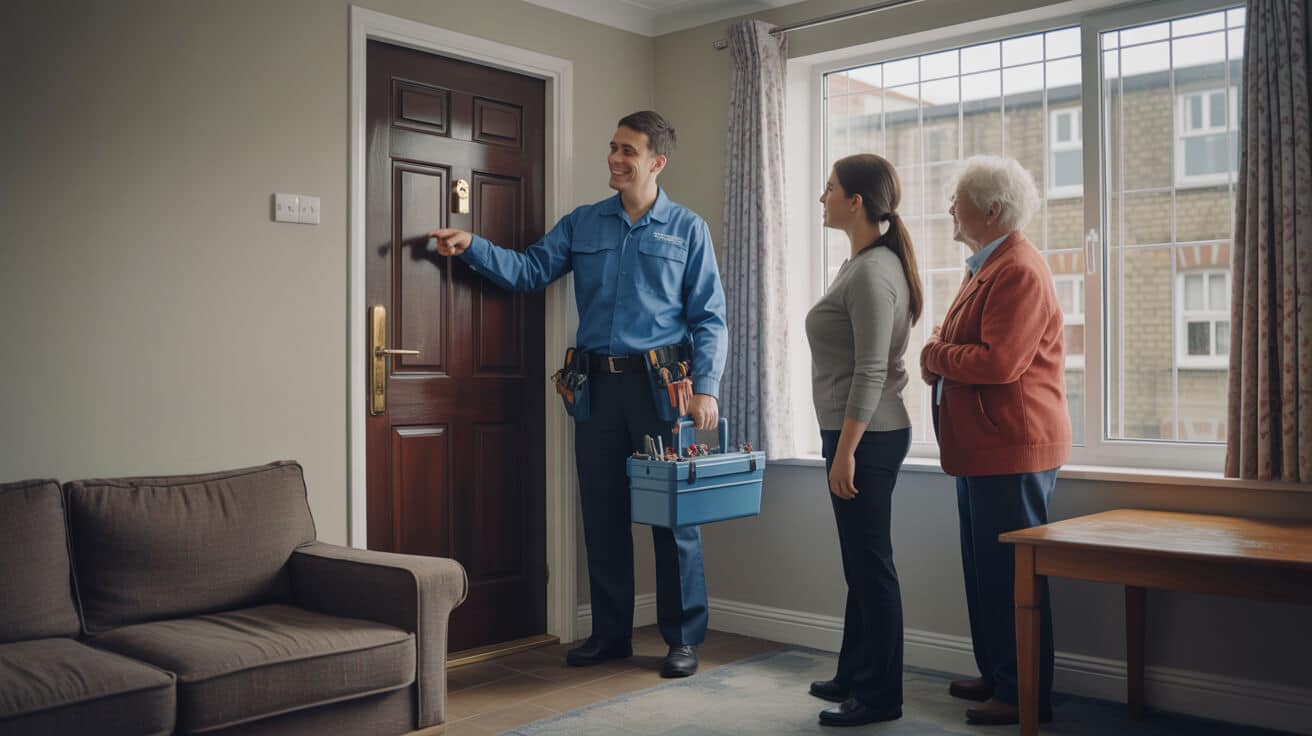
DIY hustle has its place, but repeatedly winging it leads straight to preventable disasters. When you work with All Services 4U, every visit guarantees a step above: City & Guilds qualified, DBS-cleared, IPAF & PASMA-registered techs who know UK regs inside out—people like Hector Gauge, whose reputation is built on getting the detail right, every time.
Why Our Service Means Fewer Emergencies and Easy Compliance
- End-to-End Skill Coverage: We handle electrical, plumbing, carpentry, and appliance fixes in a single call-out—no need for endless trade switches or repeat visits.
- Digitally Documented, Insurer-Friendly: Immediate paperwork satisfies insurers, local authorities, and legal requirements. Our digital reports meet EICR, gas safe, and landlord risk register standards.
- Proactive Advice and Future Proofing: We update you on regulation shifts, tech options (like water leak detectors or smart metres), and energy-saving upgrades that directly protect asset value.
- Transparent Communication: From booking to report, you see what was found, what was done, with before/after photos ready for audit or tenant documentation.
You control scope and spend: opt for one-off visits, reactive callouts, or planned maintenance schedules that fit your tenancy structure or property size. Every job is underpinned by a transparent price and a reputation that’s TrustMark and Checkatrade-approved—real-world accountability, no drama.
The best technician is the one you barely remember—because nothing major ever goes wrong.
Emergencies shrink when systems work quietly in the background. Our job is to make your appliance care so frictionless you stop worrying about what’s next and instead focus on the bigger picture—property that just works.
Choose All Services 4U to Safeguard Appliances, Property, and Peace of Mind
No one gets resilience by accident. It’s built methodically, with smart action, honest documentation, and a property partner who sweats the details so you don’t have to. All Services 4U doesn’t just “fix what’s broken”—we engineer reliability, future-proof compliance, and peace of mind across your portfolio, whether it’s one flat or an entire building.
Don’t let your investment, reputation, or tenant happiness ride on chance. Today, take the step that separates reactive owners from proactive professionals—book a property-specific plan, a rapid safety check, or a full compliance audit with a team who sees your assets as their own.
Protect every appliance, every property, and everyone who relies on your decisions. Let’s extend lifespan, shrink risk, and keep your operation running smoother than ever—starting now.
Frequently Asked Questions
How does routine appliance maintenance tangibly protect your property investment and legal position?
Diligent cleaning and regular inspections aren’t just about surface sparkle; they’re the backbone of long-term asset protection, operational efficiency, and legal safeguarding in UK property management. When you build maintenance into your routine, appliances work longer, energy bills stay lean, and compliance headaches melt away. Several landlord associations note that properties with structured maintenance logs see deposit disputes halved over a three-year period—and insurance providers now routinely request evidence of scheduled appliance checks when settling water damage or fire claims.
A squeaky hinge rarely brings a fine—ignored maintenance almost always does.
What real-world wins can you expect?
- Landlords and facilities managers: Slash emergency callouts by up to 40% and build a defensible record for HHSRS or EICR audits.
- Commercial operators: Maintain uptime for shared amenities, cutting tenant complaints and churn.
- Homeowners: Add resale value and save on repeated appliance purchases.
- Tenants: Secure better deposit returns and fewer disruptions.
Documented care not only prevents minor faults from becoming major costs, but decisively proves your diligence when questions arise. Making maintenance a visible part of your process sets you up as a leader in property standards—and weeds out those messy surprise expenses that ruin reputations.
Which appliance components are most commonly neglected, and what risks emerge from missing them?
The devil’s in the details: philtres, condensers, door seals, and vents are the most neglected appliance parts—yet they account for most costly failures and insurance issues. Unlike flashy breakdowns, these silent offenders escalate over months, quietly hiking your costs and liability. The NRLA reports that nearly two-thirds of mid-tenancy breakdowns are rooted in a missed philtre change or decaying seal. Customers who ignore these hidden trouble spots almost always pay more in repairs and lose leverage in disputes.
What’s the silent risk scorecard?
- Fridge/freezer coils: choked with dust force compressors to run longer, doubling energy usage and risking burnout.
- Washer and dishwasher philtres: filled with debris cause leaks, pump failure, or even hidden water damage in floors and cabinets.
- Oven and tumble dryer door seals: that crack let heat escape, leading to higher bills or, for dryers, increased fire risk.
- Tumble dryer lint traps: left untouched accumulate flammable lint, with the London Fire Brigade attributing nearly 1 in 7 dryer fires to this cause alone.
Routine checks—involving a visual sweep and a quick touch test for softness, brittleness, or residue—can prevent 90% of these incidents. Make overlooked parts the focus of your schedule, and unplanned spending plummets.
Table: Frequently Overlooked Parts and Real-World Consequences
| Component | Neglect Impact | Proactive Step |
|---|---|---|
| Condenser coil | Higher bills, breakdown | 6-month vacuum/brush |
| Philtre/seal | Water damage, leaks | Monthly inspection/wash |
| Door seal | Heat loss, fire hazard | Quarterly replacement check |
If your records show consistent checks on these pain points, you’ll breeze through compliance—and keep your finances healthy.
What symptoms warn that appliance dirt has turned into a real hazard, and when should you intervene?
Not all errors scream for attention; some whistle, rattle, or merely smell “off.” Recognising early warning signs—before odd noises become insurance claims—separates proactive asset managers from those chasing emergencies. Over 40% of property insurance claims stemming from appliances are preceded by ignored red flags, such as scorched sockets or persistent tripped breakers (Aviva, 2023).
Every property has a way of telling you what’s wrong—if you’re willing to pay attention.
What red flags demand urgent action?
- Overheated or discoloured plugs: Suggest electrical overloads or faulty wiring—these are leading causes of hidden fires in tenanted works.
- Persistent burning or chemical smells: Turn power off at the mains; these usually mean failed insulation, melting plastic, or an incipient fire risk.
- Loud, new, or recurring noises: Grinding or buzzing often signals worn-out bearings or motors on a pathway to failure.
- Appearing water stains or wood swelling: Often the first clue of a leak behind walls or under flooring—pouncing fast here stops rot and expensive repairs.
- Breaker trips tied to an appliance: Skip the guesswork and call a pro before further use; consistent tripping means a dangerous fault.
Smart managers log these episodes—snap photos, record the date, and document next actions. That file isn’t just useful for the fix; it’s your safety net with insurers and regulators, demonstrating you’re not waiting for disaster to strike.
How can you design maintenance schedules that actually get followed in busy property environments?
The problem isn’t knowing what to do—it’s making it stick. The best cleaning and inspection routines tie maintenance triggers to predictable events: tenancy changes, daylight savings, or set billing cycles. For block managers and portfolio landlords, digital logs integrated with calendar reminders mean no missed checks and easy evidence for any audit or dispute. Facilities teams see major drops in crisis repairs once they adopt a habit-linked process. The “inspection gap” shrinks when every step is simplified and tracked.
Strategies for foolproof maintenance adherence
- Link appliance checks with regular property reviews, fire alarm tests, or HMO inspection cycles.
- Use apps or cloud logs to store inspection photos—this eliminates lost paperwork and supports audit trails.
- Lay out the cycle: monthly (philtres, visual checks), quarterly (coils, door seals), and annual (deep cleans).
- For large portfolios, assign a property “champion” whose name appears in the digital log.
Sample Table: Optimal Maintenance Frequency by Component
| Component | Task | Frequency |
|---|---|---|
| Fridge/Freezer | Clean coils, check seals | 6m / Quarterly |
| Washing Machine | Wash philtre, check hose | Monthly / 6m |
| Oven/Tumble Dryer | Check seals/lint trap | 1m / Every use |
| Dishwasher | Clean spray arms, philtre | Quarterly |
When you show up with proof of a working schedule, you limit your compliance risk and build a clear defence for every deposit or insurance conversation down the road.
Which maintenance routines most powerfully drive compliance, savings, and tenant loyalty in UK property management?
Strategic maintenance isn’t just about ticking boxes—it’s measurable asset care, energy savings, and stronger trust with every logged check. Cleaner coils, philtres, and seals keep you aligned with HHSRS, EICR, and Gas Safe requirements. Ofgem’s 2024 report put the annual savings at up to £130 on average properties purely from routine cleaning. Tenants and commercial users benefit from fewer outages and less stress at handover—while landlords gain documented evidence whenever regulators or insurers come calling.
A building’s reputation isn’t built by words—it’s built, proven, and protected by your routine.
Essential moves for high-performance management:
- Document each check—add time-stamped photos to logs for bulletproof evidence.
- Automate reminders for annual engineer visits, quarterly cleaning, or key certificate renewals.
- Give tenants simple checklists and explain their own upkeep role; this preempts blame when damage occurs.
- Capture “before and after” metrics (like power usage after a coil descaling) to demonstrate value for every task.
These steps improve compliance, reduce surprise costs, and create a property culture where everyone actually cares—and shows it, when it counts.
How do you determine what’s safe for DIY and when only certified professionals can handle property appliances?
The easy rule: surface cleaning, philtre changes, and visual checks are generally fine for DIY—anything involving wiring, electrics, gas, or diagnosing recurring faults belongs with a certified professional. UK standards since 2022 have toughened: unauthorised gas work not only voids insurance but carries criminal penalty if injury occurs. DIY mistakes are cited in over half the London Fire Brigade’s recent appliance fire reports, mostly where electrical or water faults were involved.
Table: DIY vs. Professional Calls
| Task | DIY-Safe | Professional Only |
|---|---|---|
| Dust & philtre cleaning | ✔️ | |
| Visual seal check | ✔️ | |
| Replacing water hoses/valves | ✔️ | |
| Rewiring, circuit faults | ✔️ | |
| Smell of burning/heat | ✔️ | |
| Gas appliance repairs | ✔️ | |
| Appliance tripping electrics | ✔️ |
If there’s ever doubt, take a photo, note the issue, and contact a trade-accredited pro. Keep that evidence in your logs to show responsibility. In modern management and for legal compliance, peace of mind is worth more than the cost of a single callout.
Ready to set a new operational standard? Let All Services 4U handle the compliance-backed, stress-free care that keeps your assets earning—and your reputation climbing every quarter.



